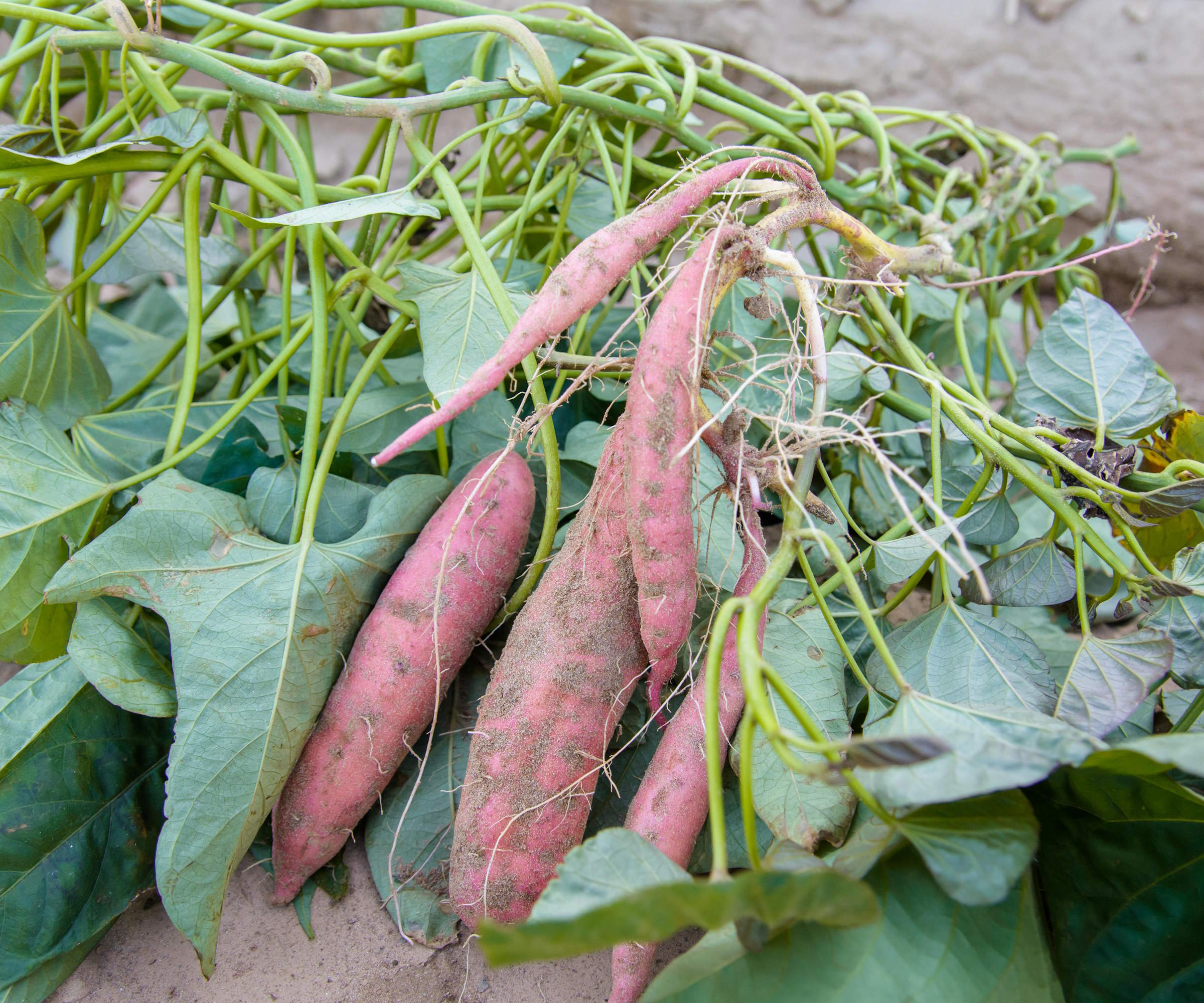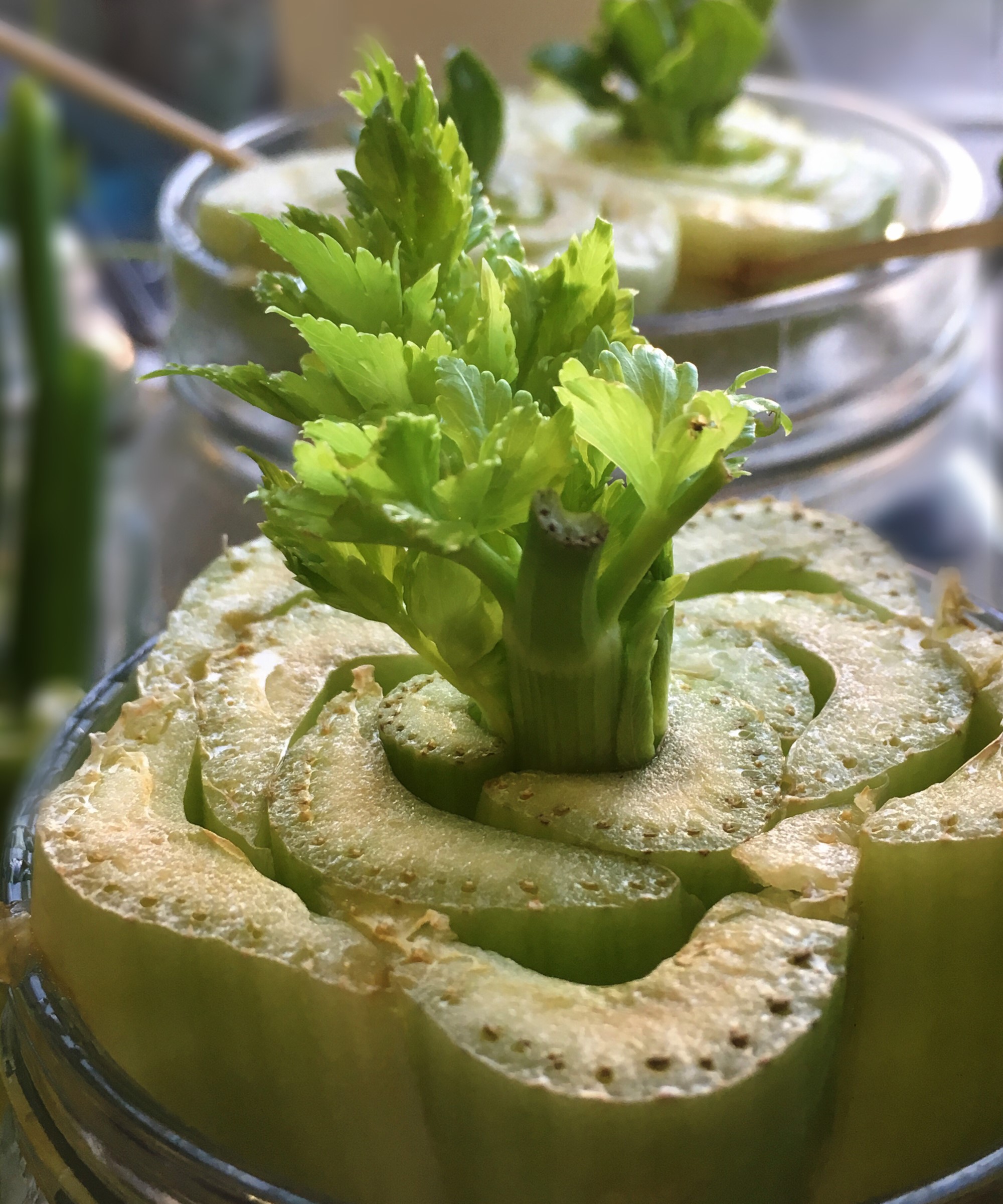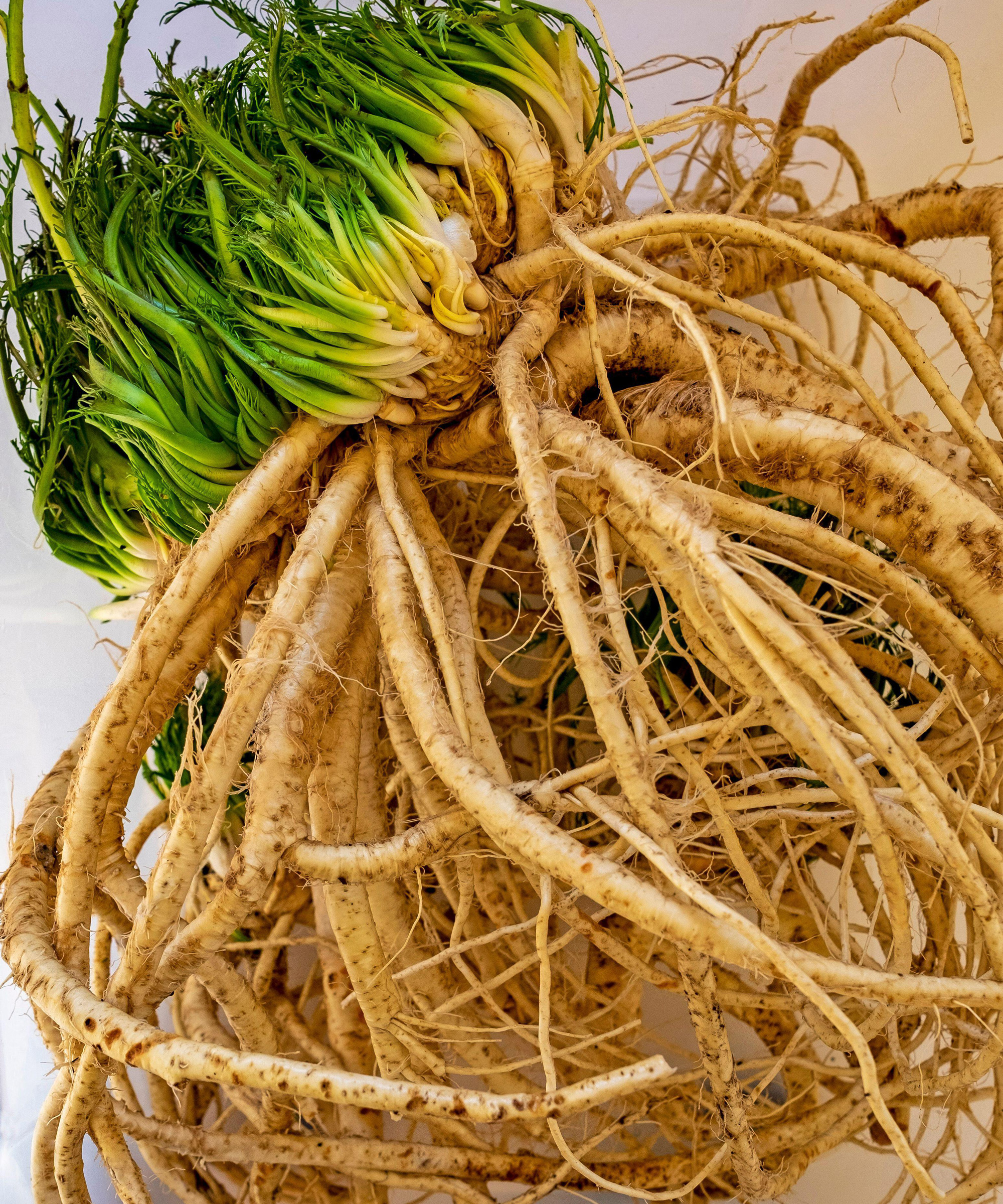
The majority of vegetables are grown from seed or purchased as transplants from garden centers or nurseries to plant into your vegetable garden. We often take plant cuttings from herbaceous perennials or shrubs, but you might not have attempted to grow vegetables from cuttings.
Propagating vegetable plants in this way is not only enjoyable, but it saves money too. And there is a surprising range of vegetables that grow from cuttings successfully to discover.
Our guide looks at a great selection of vegetables to grow from different types of cuttings. Not only can you take stem and root cuttings, but you can also sprout vegetable plants from kitchen scraps.

10 of the best vegetables that grow from cuttings
A wide and varied selection of vegetables can grow from cuttings and it can be a simple way of propagating vegetable plants. Growing vegetables from cuttings is a fun gardening experiment and a very satisfying way to get vegetable plants and harvests.
1. Tomatoes

Tomatoes are a great edible plant to grow from cuttings. To grow tomatoes from stem cuttings, use a side shoot normally removed when pruning tomato plants. Christy Page, editor and publisher for the Food Gardening Network, recommends: ‘The best time to take stem cuttings is typically in late spring or early summer when the plants are actively growing’
She adds: ‘Take a healthy, non-flowering stem about 4-6 inches long, remove the lower leaves, and place it in water or a moist growing medium until roots form.’
A strong network of roots should develop in a few weeks and the plant can be potted up to grow. Plants grown from cuttings will fruit later in the year, and provide you with a fall harvest of tomatoes.
2. Peppers

Growing peppers from cuttings can be an ideal way to clone your favorite plants and overwinter peppers indoors to cultivate the next season. The process can work with any type of peppers, from bell peppers to ornamental peppers, and the best time to take pepper cuttings is in early summer.
Pick a healthy stem still flexible at the end and take a 4-6 inch long cutting, removing it below a node. Remove all the foliage bar the top few leaves. Christy Page advises dipping the cut end of the stem into a rooting hormone to ‘help speed up root development’.
Pepper cuttings can be rooted in water or soil, however, it can take up to a month for the first roots to form. If your cuttings are placed in soil, Christy advises how they will thrive with higher humidity. ‘Covering them with a plastic dome or placing them in a mini-greenhouse can help maintain moisture levels,’ she recommends.
A rooting hormone gel to clone your cuttings and plants. It uses a proven IBA rooting hormone to ensure plant cuttings root quickly and effectively.
3. Sweet Potatoes

It may sound surprising, but you can grow sweet potatoes from stem cuttings taken from the vine during summer. Take healthy 6-8 inch stem cuttings, remove most of the foliage, and place the cuttings into a container filled with water.
Once the roots are a few inches long, plant the cutting into a pot filled with quality potting mix to overwinter somewhere frost-free. The plant can then be put out into the vegetable garden next spring, or you can grow the sweet potato in a container or grow bag if you want to cultivate the crop in a small vegetable garden.
4. Lettuce

You can grow lettuce by cutting the base and resprouting the plant. Growing lettuce from scraps is an economical and simple way to get a fresh set of leaves from a part of the plant that many people throw in the trash. It can work with any head-forming lettuces but is particularly useful if you grow romaine lettuces to get a second harvest from your crop.
‘I place the cut end (always remember to use a clean knife) in a shallow dish of water and place it in a sunny window,’ says Donna Letier, founder and CEO of Gardenuity. ‘After a few days, new leaves will sprout, and you can transplant it to healthy soil for further growth.’
When the lettuce cutting sprouts leaves that reach a few inches tall, you can harvest the lettuce leaves at this stage for use in salads or sandwiches, or plant the sprouted lettuces into the garden to grow them on.
5. Asparagus

It isn’t a traditional way of propagating this popular perennial vegetable, but you can grow asparagus from cuttings taken from existing mature clumps.
Take cuttings of stalks from healthy asparagus crowns that are at least 10 inches long and plant the cutting into 8-10 inch deep pre-prepared holes. Keep the soil moist around the cutting and wait for it to develop roots. An alternative method is to place the stalks in a container of water and wait for them to develop roots before planting outdoors into the soil.
Growing asparagus from cuttings may not be a guaranteed way to grow asparagus, but it certainly may be worth an experiment. Patience is required, however, as it will take three years to get a first harvest.
6. Malabar spinach

Christy Page recommends Malabar spinach as a perennial green that can be grown from cuttings.
Malabar spinach is an interesting alternative to growing spinach, as it is a vining plant with dark and glossy edible leaves. It can be a perennial crop in warmer US hardiness zones, or grown as an annual in cooler climates. Additionally, the crop grows vertically and does need a vegetable garden trellis.
To grow malabar spinach from cuttings, take six-inch cuttings of healthy stems and root them in water or soil. Plant the new cuttings in a warm spot, but the vines can grow successfully in part-shade.
7. Green Onions

Green onions or scallions are another crop very simple to grow from the chopped-off bulb end that is normally thrown away.
To grow onions from scraps, simply chop off the green parts to use in cooking and place the base of the green onions in a shallow container filled with an inch or two of water. Place the container on a sunny windowsill and it should only take a few days for the first roots to develop. Plant the shooting bases into pots or the ground when they have roots 4-5 inches long.
8. Kale

Kale plants are traditionally grown from seed every year, however, both annual and perennial varieties of kale can be grown from cuttings. It can be an inexpensive and satisfying experiment to try growing kale plants in this way.
Take kale cuttings in summer from healthy side shoots off the main stem. Remove most of the leaves and cut below a node before dipping the end of the cutting in rooting hormone. Place the cutting in a container filled with free-draining potting soil and keep moist.
An organic starter potting mix specially formulated to grow seedlings and cuttings. Containing a blend of natural ingredients to promote root growth.
9. Celery

Celery is another vegetable that can be regrown from its base, providing a second crop of stems to harvest. To grow celery from a stalk, slice off the plant’s base and place it in a shallow dish of water.
Roots and small stalks will start to form quickly and the sprouted celery stalk can be planted into a pot or directly into the ground. Regular watering is important when growing celery as the crop needs a lot of moisture during the growing season to guarantee a good harvest of celery stalks.
10. Horseradish

The unique spicey roots of horseradish can be propagated quickly and easily via root cuttings.
If you are growing horseradish, lift the clump and slice lengths of side roots around 8-10 inches each. Cut each of these into separate three-inch sections - making a flat cut at the top and an angled cut at the bottom of each - and plant them into a seed tray filled with free-draining compost.
When the cuttings have rooted, separate them and plant them in a sunny spot in the garden. It is recommended to plant horseradish into large pots or buckets buried in the ground, to stop this vigorous crop from spreading.
It is not just lettuce, celery, and green onions that can be grown from scraps. Other, potentially surprising, crops can be sprouted in this sustainable way to get a second harvest from homegrown vegetables. Simple and fun experiments to do at home include growing carrots from carrot tops, sprouting leeks, parsnips, or beets, and growing Brussels sprouts from scraps.







